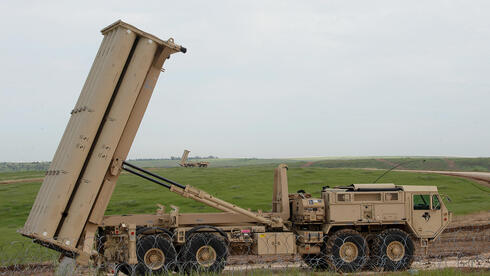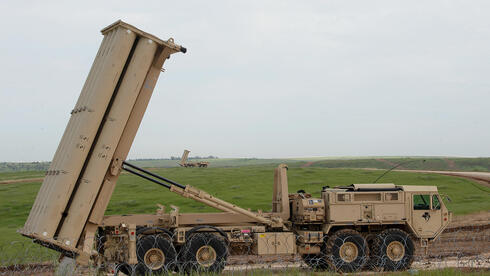
Analysis
From Iron Dome to F-15s: US provides 70% of Israel’s war costs
A report by Brown University’s Watson Institute reveals that since the beginning of the war, the US has spent more than $22 billion on military aid to Israel - from weapons and equipment to the deployment of aircraft carriers. Israel receives more U.S. military aid than any other country and is uniquely able to use that funding to spend on domestic goods.
The U.S. government has spent at least $22.76 billion on military aid to Israel from October 7, 2023, to September 30 of this year, according to a report by Brown University’s Watson Institute for International and Public Affairs as part of its Costs of War project. About $17.9 billion was spent on direct military aid to Israel, and $4.86 billion on U.S. military operations in the war zone, including actions against Houthi forces in Yemen, such as deploying aircraft carriers and air defense batteries in the region.
The project aims to shed light on the extent of U.S. assistance in armed conflicts where the U.S. is directly involved and adopts a critical tone regarding the lack of transparency surrounding these figures. In their recent paper entitled “United States Spending on Israel’s Military Operations and Related U.S. Operations in the Region, October 7, 2023 – September 30, 2024,” the paper opens by stating that, "It has been difficult for the U.S. public, journalists and members of Congress to get an accurate understanding of the amount of military equipment and financial assistance that the U.S. government has provided to Israel’s military during the past year of war. There is likewise little U.S. public awareness of the costs of the United States military’s own, related, operations in the region, particularly in and around Yemen." The study was led by Prof. Linda Bilmes, a senior lecturer in public policy and public finance at Harvard University.
The study was published earlier this month and presents several important conclusions, particularly in light of the Biden administration’s calls for a ceasefire in Gaza following the assassination of Yahya Sinwar and for increased humanitarian aid to the region. At the same time, calls are being heard in Israel to shut down the UNRWA refugee agency (a move the U.S. opposes), along with criticism of the Biden administration by Prime Minister Netanyahu and coalition leaders, such as Ministers Itamar Ben-Gvir and Bezalel Smotrich.
The total amount of American aid since the start of the war is about NIS 85 billion ($22 billion) based on an average exchange rate by the Bank of Israel over the past year. Most has been delivered but about $5.2 billion will only arrive next year. According to official estimates from the Bank of Israel, the total cost of the war is estimated to be about NIS 250 billion ($65 billion), including around NIS 118 billion ($31 billion) for military costs including army operational costs, replenishment of military equipment, ammunition, and logistical support. Therefore, by a simple calculation, the U.S. has been funding about 70% of the war effort.
Although this calculation is not exact due to the cash flow over time (there is a gap between actual expenditures and the receipt of funds), there is no doubt that without American assistance, the government deficit for 2024–2025 - one of the highest in the country’s history - would be about 4.3% more of the GDP - an unmanageable amount. Therefore, it is doubtful that the war would have been conducted in its current intensity or scope without U.S. assistance.
The paper emphasizes the strategic importance of U.S. funding and development for missile defense systems including Iron Dome, David’s Sling, and Arrow. Additionally, due to the conflict's escalation, the rapid rearmament of Israel's weapons and ammunition stock - including critical supplies of artillery shells, bombs, precision-guided ammunition, and anti-tank missiles - has played a central role.
The study notes that the vast sum already approved was merely a first round: on August 13 this year, the Biden administration announced additional arms deals worth $20.3 billion, including the sale of F15 fighter jets from Boeing. The package includes 50 combat F15 jets ($18.8 billion), more than 32,000 tank munitions ($774 million), tactical vehicles ($583 million), 30 advanced medium-range air-to-air missiles ($102 million), and 50,000 mortar rounds ($61 million). According to the study, the Pentagon updated delivery dates for these systems is between 2026 (mortar shells) and 2029 (for the F15s).
The document highlights Israel’s standing as the country that has received the most U.S. aid since World War II, totaling $251.2 billion over 66 years. Additionally, the aid provided by the Biden administration to Israel over the past year was the highest in the history of relations between the two countries, 25% higher than the second-largest amount - $14 billion in the late 1970s (in real terms, reflecting purchasing power by adjusting for inflation).
Another unique feature differentiating U.S. military aid to Israel from other countries is the allowance to spend up to 25% of the aid on Israeli-produced goods - a privilege the U.S. has granted to no other ally. The authors believe that this provision supports Israel's defense industry, making it one of the most self-sufficient countries militarily while still receiving U.S. assistance.















